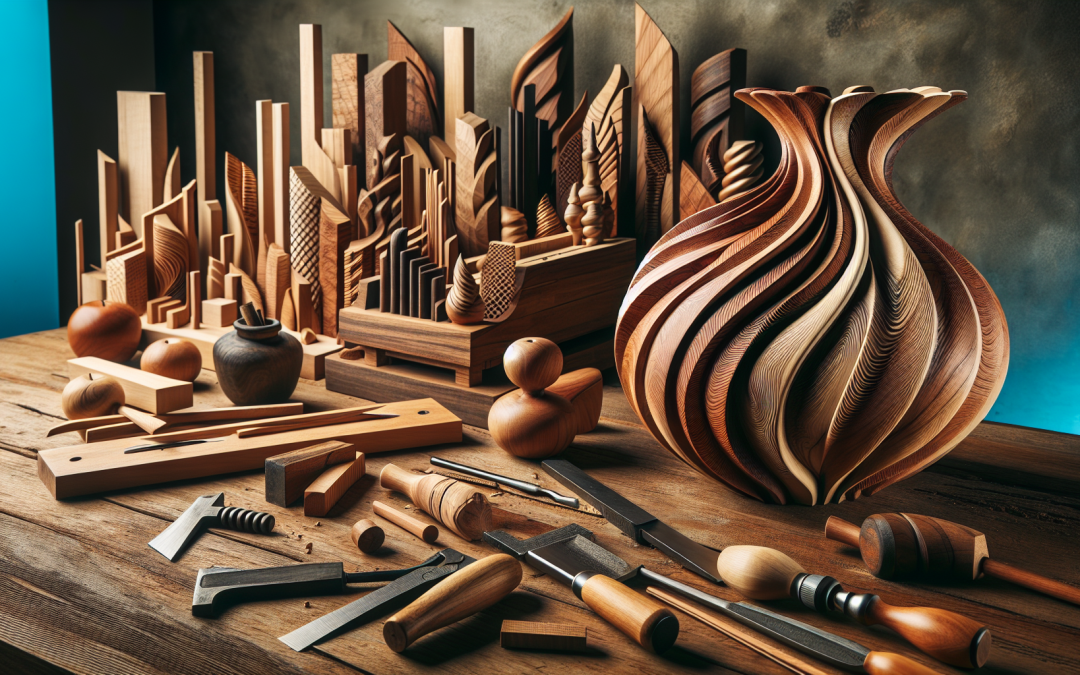Woodworking is an art that dates back to prehistoric times, and it has been evolving ever since. Many technologies and techniques have been developed to improve our woodworking skills; among them, one of the most interesting and least-understood is wood bending. So today, we will take a closer look at Advanced Wood Bending Techniques which can genuinely elevate your woodworking craft.
Bending Wood: The Science Behind the Art
Wood bending may seem like an advanced skill, but it’s not as complex as it may seem. One of the least-understood aspects of woodworking is how wood works; once you grasp that idea, wood bending becomes much more accessible.
Wood is fundamentally a porous, fibrous material. When exposed to heat and moisture, its fibers can become plasticized, or more flexible, allowing them to be bent and shaped while remaining strong. Once cooled and dried, the wood retains its new shape yet regains its rigidity. This process is the foundation of wood bending.
In contrast, regularly cutting and joining wood in straight lines can often result in weakened joints, which are notably common woodworking mistakes. Bending the wood preserves its strength and can lead to a more aesthetically pleasing result.
Essential Tools for Wood Bending
Just like any other woodworking method, bending wood requires the right tools. One can’t underestimate the importance of having the right woodworking tools at hand. A heating chamber, bending straps and forms are integral to bending wood.
The heating chamber, often a steam box, is essential for making the wood pliable. Just as important are the bending straps, which help prevent the wood from splitting or breaking during the bending process. And finally, the bending forms provide the desired shape to be created.
And while woodworking often involves the use of power tools, when it comes to wood bending, employing some traditional woodworking tools is often the best choice.
The Process of Wood Bending
Before you can bend wood, you must understand the process and have a clear plan. You should determine what shape you want your wood to take. Also, consider the type of wood to be used, as the properties of different wood species can significantly influence the bending process.
Once your plan is in place, the bending process can begin. The wood is first placed in the heating chamber to make it more pliable. After an adequate period, it is removed, immediately attached to the bending straps, and skillfully maneuvered around the bending forms.
Mastering the Art of Wood Bending
Bending wood, like any other skill in woodworking, requires patience and practice. Even with keen understanding and the right tools, you won’t perfectly bend your piece of wood on your first attempt. Don’t be disheartened; continue to practice and learn from your mistakes.
One frequently overlooked factor in woodworking is having a suitable workspace. Excellent lighting, organized tools, and sufficient space are all essential for accomplishing your projects. A well-set workspace contributes to consistently making accurate, clean cuts, and ultimately creating splendid pieces.
Conclusion: Embrace the Learning Curve
When considered, it’s not surprising that bending wood can greatly enrich your woodworking. It allows for more unique and exciting designs, stronger joints, and the chance to work with your wood in a more intimate, hands-on way.
As with learning any new technique in woodworking, it will take time, patience, and practice. Start small, enjoy the process, and you will be adequately rewarded with a new set of skills and a broader range of possibilities for your future woodworking projects.
And remember, you’re not alone in this journey. Embark on this venture with our Woodworking Masterclass community and improve faster and more confidently. Wood bending is not only an essential technique for woodworking, but it is also a compelling testimony to the possibilities of what you can create with your own two hands.

